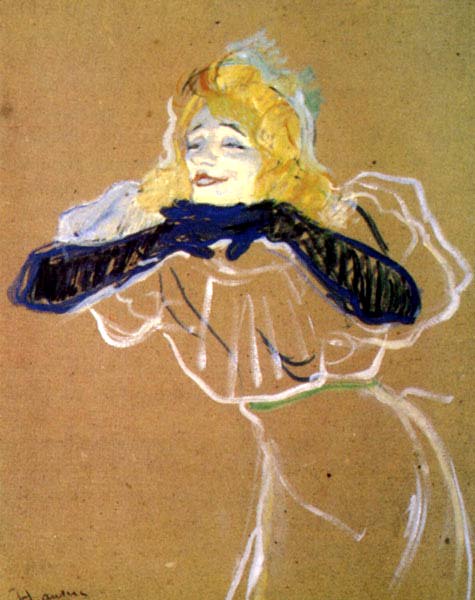Raymond Rudorff, The Belle Epoque; Paris in the Nineties (3)
The Image and Reality of Montmartre
This was the great period when for people throughout Paris, France, Europe and the world the Moulin Rouge became a synonym for Montmartre, Montmartre a synonym for Paris and Paris--another word for Pleasure. The Moulin Rouge gave immense impetus to the diffusion of a great erotic myth--the myth of a naughty, free, uninhibited city of frou-frou and champagne, of the wild music of the quadrille which seemed to urge rich and poor alike to forget their cares and live for love and laughter only. Montmartre with its "bohemians", its poets and painters and singers and flaring lights of its gas jets and electric signs exerted a powerful fascination upon the minds of a generation and has continued to fascinate novelists and film-makers ever since.
The reality was more down-to-earth. There was little in common between the lavish imitation of the can-can offered by the modern Folies Bergère and the cinema and the real Moulin Rouge with its not so glamorous ladies who danced with more gusto than choreographic precision. It was a somewhat roughand-ready dance hall with a variety of entertainments including popular songs and music-hall acts. The climax of the evening was when its wooden floor shook under the stamping feet of the dance girls in an atmosphere of smoke, noise and the brassy blare of the band. The girls who performed were not chosen for their looks but because they were strong and their appeal--or rather that of their dancing--was direct, unabashed and crude. There was no false glamour and no barrier of footlights to set them in another dimension from their audience. When the girls came out on to the floor, the audience would surge forward and crowd in upon them for a glimpse of an inch or two of naked flesh. The attitude of many of the spectators was, as one French writer has remarked, more that of the naughty schoolboy than the seeker after eroticism.
There was certainly as much hypocrisy in Third Republic France as there was in Victorian England, but there was also a strongly surviving tradition of public enjoyment of physical pleasures and suggestions. A comparison between English and French popular illustrated journals and newspapers of the time reveals the relative lack of prudery in France and a willingness to enjoy a good, Rabelaisian belly-laugh. Gil Bias Illustré, Le Rire and other papers were full of "sexy" cartoons and jokes about erring husbands, respectable gentlemen caught in compromising situations, wives in bed with their lovers and innumerable advertisements for "rejuvenation pills", cheap contraceptives and treatments for venereal diseases. Humour on the stage was often bedroom humour which might be vulgar but which could also be raised to a high level of comedy and touched with genuine wit. . . .

Henri de Toulouse-Lautrec, Yvette Guilbert (1894)